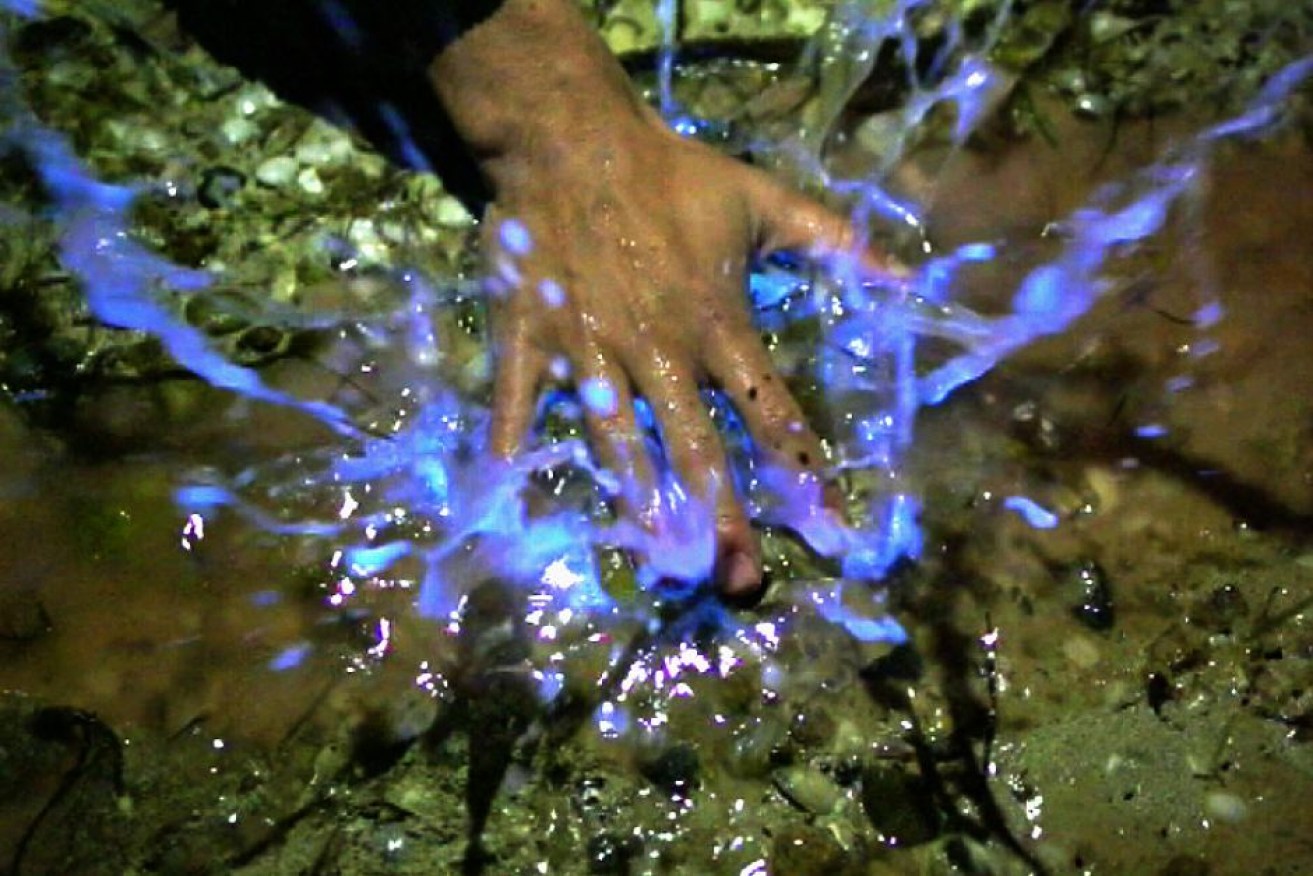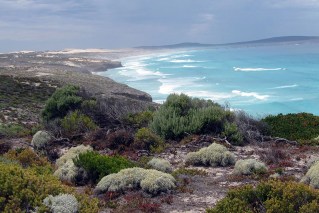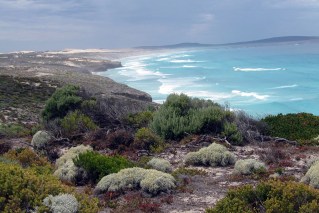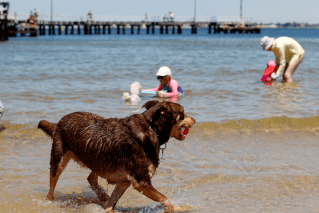Glow-in-the-dark algae lights up Port Lincoln beach in SA


The luminescence is a chemical reaction by algae threatened by predators. Photo: ABC
It was Kye Higgins’ dog Miss Millie who discovered the bioluminescent bloom, known as sea sparkle, while wandering through the shallows at Tulka beach near Port Lincoln on Sunday evening.
“It looked like there was glow-stick liquid on her legs,” Mr Higgins said.
Soon everybody was playing with the bloom — with the scientific name Noctiluca scintillans — which is a dull pink colour until it is disturbed by a wave, or a foot.
“Whenever it lands on something it glows, just little splatters of bright glue,” Mr Higgins said.

Kye Higgins and his dog Miss Millie found luminescent algae on the Port Lincoln beach. Photo: ABC
“There was a couple of salmon out the back jumping out, and it was like fireworks.”
Marine ecologist Ivan Nagelkerken said the illumination was caused by a natural chemical reaction by algae in an anti-predatory tactic.
“When these algae are eaten by a predator they glow up, so that predators of their predators can see them,” he said.
The blooms flourish in waters that are warm, still and nutrient rich, and while they used to be rare they are becoming more common at Australian beaches.
“There are reports from Tasmania, the east coast of Australia and Cairns where this happens more regularly,” Professor Nagelkerken said.
“But apparently in South Australia it is pretty unique.”
The ghostly glow is also a sign Noctiluca scintillans is nearing the end of its life. Within a few days the bloom will have peaked and faded away.
-ABC








